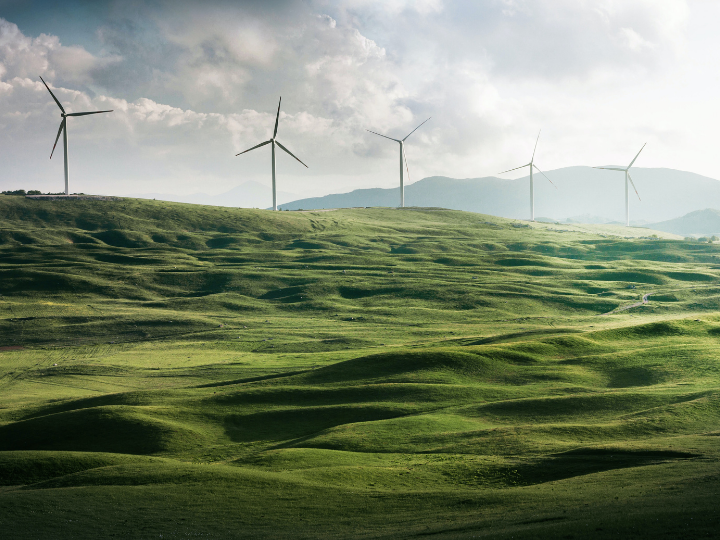by Andrew Herscowitz*
At climate conferences, government development finance institutions (DFIs), multilateral development banks (MDBs) and government aid agencies make bold announcements about how much money is needed to finance the energy transition.
They talk about mobilizing financing from others and say that there simply is not enough public money available to solve the problem. But they can do much more to deliver on this promise.
By spending money differently, they could put a huge dent in the problem; but that will require them to adjust their approach to investment and their return expectations.
Financing the energy transition quickly will not be free. According to a newly-released report from the ONE Campaign, “Borrowing from capital markets is costing African governments 500% what it could if G20 leaders delivered swiftly on financial reform.”
Taking these steps can take us beyond talk and into action. Here are four ways development finance can accelerate clean energy transitions:
1. Adjust return expectations: leverage vs loss
Most DFIs and MDBs are expected to earn a positive return on their investments. That’s because most were designed to be self-sustaining, some even borrowing money from capital markets. They must earn a return to survive.
But why were they designed this way? Do taxpayers and donor countries really stand to benefit in any meaningful way if DFIs earn a few million dollars a year on a multi-billion dollar portfolios when the same countries spend tens of billions of dollars each year on grant assistance?
In the first few years of the United States’ Power Africa initiative, the US government spent approximately $500 million to help 120 power projects worth $20 billion cross the finish line. That’s an incredible 1:40 leveraging of resources.
However, if a DFI financed $20 billion of power projects and lost $500 million on the portfolio, people would criticize it for losing money. It’s the same story, though.
DFIs and MDBs must aggressively use grant money – e.g., blended financing – and provide concessional financing to see results. They should not view the financial model as a loss, but rather as leverage of public money for private investment.
For example, DFIs and MDBs financed large scale solar power in Chile a decade ago and suffered losses. That’s not only okay, but it should be celebrated. That’s because they were the first movers and took risks others were not willing to take.
Others throughout the world learned from the experience, which led to very successful solar auctions and inexpensive, commercially viable electricity, in places like Mexico, Saudi Arabia, and South Africa. DFIs should go all in on being first movers to help shape future markets. That’s why the word “development” is the first word in development finance institutions.
2. Lend money in the proper currency
Most renewable energy projects in developing countries are 20-year-plus projects, financed in dollars or euros, but earning local currency. The local currency likely will depreciate against the dollar or euro over time.
When that happens, the price of electricity has to be adjusted up to service the loans, making electricity more expensive for poor populations. It’s a recipe for sustainable poverty, not sustainable development.
Most inputs for renewable energy projects need to be imported, so projects need hard currency loans to buy equipment. But over the course of the project, repayment obligations should be in local currency – the currency that the customers pay.
While DFIs should not have to take on all the currency risk, even taking on some of the risk can help keep down the cost of electricity. If a DFI agrees to take on the first $10 million of currency risk on a $100 million loan, potentially only earning back $.90 on each dollar of $100 million loan over a 20-year period, one should view that “loss” as turning a $10 million grant into a $100 million project.
It’s not losing money; rather, it’s 10:1 leverage of repayable financing to grant dollars to provide less expensive and sustainable electricity that will make the country’s small businesses more competitive.
3. Focus on the countries that don’t have investment at scale
India is one of the world’s biggest carbon dioxide (CO2) emitters. It needs more renewable power to displace its coal, but it’s also the world’s third largest producer of electricity with a $3 trillion GDP.
India has had solar fields for decades. International institutions focus so much effort on financing more renewable power projects in India because it’s a major CO2 emitter.
But there’s also a temptation to finance large projects in countries because the transaction cost of financing a large power project in a country that has been doing solar for 20 years can be much lower than financing a small project in a country that has never done solar and that has limited technical capacity. There also are greater efficiencies and returns for a DFI to invest in a 100 megawatt (MW) power project in India than a 5 MW power project in Liberia.
*Executive Director for North America, ODI
**first published in: Weforum.org




 By: N. Peter Kramer
By: N. Peter Kramer
